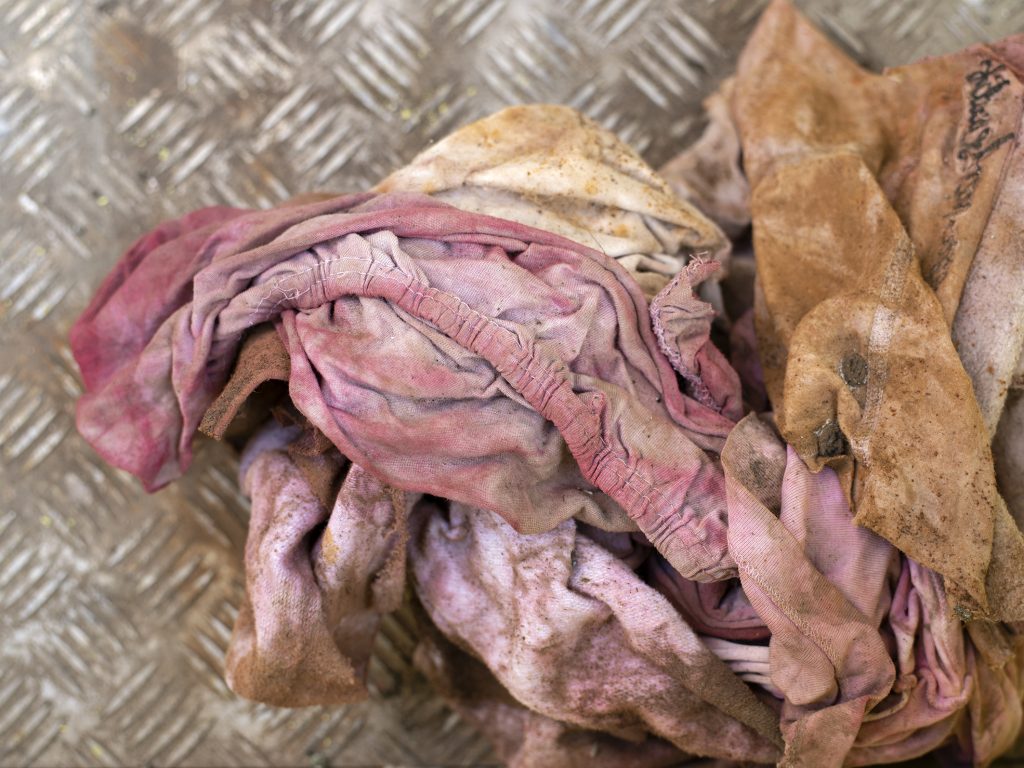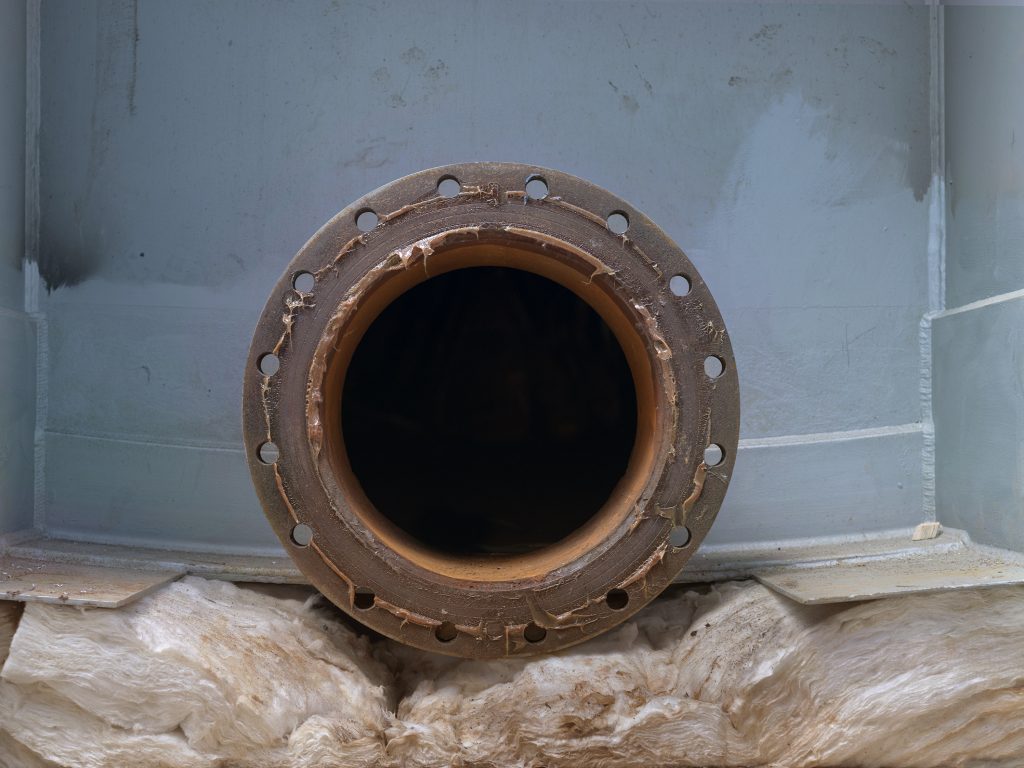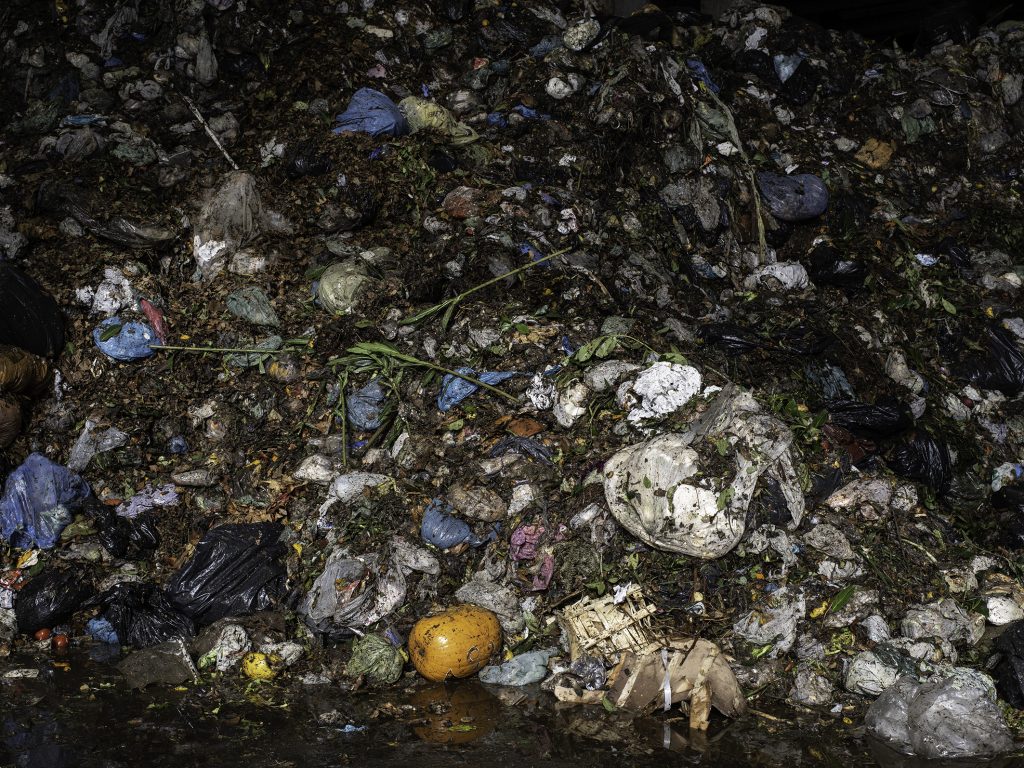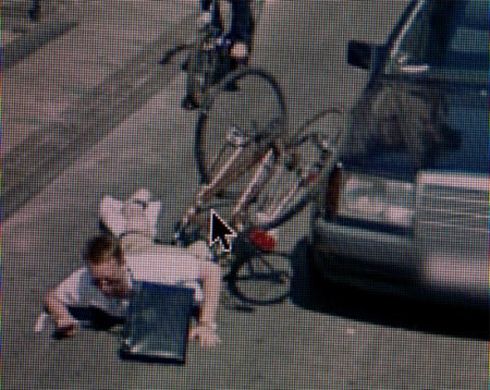by Azzurra Immediato
_
This issue, which started during the lockdown weeks, asks questions, walks doubtful paths of reflection, thinks about the past, questions the present and looks at the future with hope, in the wake of what the entire editorial team envisioned as “Challenges for the future”. How could we have dealt with such a broad, profound, undeniably undermined and uncertain, universal and plural matter, like the global challenges launched by human history? My “challenge for the future” materialized through the research of Silvia Camporesi – already a guest of the surrealist story of the Photolux Magazine Stories are searched swimming under water – and of her Circular View project, presented last January in Bologna, on the occasion of ArteFiera 2020, in an exhibition curated by Carlo Sala, in the setting of Palazzo Zambeccari and promoted by Gruppo Hera SpA.
An exhibition able to combine pure beauty with the essence of waste, not just and not only in a philosophical and sociological sense but also physical and chemical. Circular View, in fact, through a series of images chosen specifically for the exhibition and proposed as suggestive lightboxes, tells the evolution of the construction of the biomethane plant of Sant’Agata Bolognese, in Emilia Romagna, which took place between 2018 and 2019, wanted by Hera SpA that, by involving Camporesi in this visual project created an intersection between pure documentation and the lyricism that distinguishes the artist’s gaze. A project that makes waste a revolution and that, through an artistic story, has been able to trace the line of such an important challenge: benefit – in terms of energy, environment and society – from what is destined to be wasted.
I had the pleasure of meeting Silvia Camporesi “virtually” and asking her some significant questions, to discover with her and with the readers the deeper meaning of Circular View, in order to understand the value of a project born from the dialogue of a company with an artist, two extremely different voices, as we shall see, united by a common perspective.
“CircularView”, a story through images which, in collaboration with Hera S.p.A. has outlined an unusual and peculiar aesthetic itinerary, capable of pointing the lens to a future universe, one that, in this plant for the production of biomethane from the organic fraction of waste, will generate sustainable energy. Certainly a challenge, in which man and technology follow the cycles of nature and perfect them. For a year, your gaze focused, in a very particular way, on the construction process of this revolutionary system, born a few km from Bologna. Tell us your first impressions, from the idea of the Hera Group to your design intuition.
The Hera Group contacted me to ask me to create a story related to the construction of the plant, I proposed to photograph it on a regular basis, once a month for a year, the time that had been estimated for its construction. It was a very complex job because I had never worked on photography of that kind, so I asked for total freedom in the creation of the images, I didn’t want to have any kind of constraints. The representatives of Hera understood perfectly the meaning of my request and gave me their full trust. Month after month I saw the flow of works, huge metal pieces that took shape and were incorporated into increasingly large and articulated structures. Paradoxically, the more the months passed, the more difficult it was for me to shoot, because the objects that before could be seen as abstract forms, gradually took their place within the architecture. The moment I understood the intended use, they suddenly became less interesting from a photographic point of view.

“Circular View” has been made into an exhibition, curated by Carlo Sala in the context of Art City 2020, and took place in Palazzo Zambeccari in Bologna, just before the lockdown. It offered a setting capable of proposing a syncopated dialogue full of suggestions, in which the authorial vision merged with the message conveyed by the company, sanctioning some fundamental passages: the first is that the art and the privileged point of view of an artist, are the only possible gates in the confused collective consciousness. The second is that art and, therefore, photography, have the ability to generate, through the power of images, the revolution implemented by a corporate will so that it can reach a universal audience. How did you accept this challenge and this responsibility, translated through your vision?
When the project was proposed to me, there was no mention of the idea of an exhibition, so I did the work thinking that it would be destined for their internal circuit. Almost a year later, the idea of the exhibition came out. It was a long and complicated process: first of all, we visited several spaces, eventually choosing Palazzo Zambeccari, the largest and most impressive one, but also the most difficult to deal with. After several visits to the Palace together with the curator Carlo Sala, we decided to create eleven large lightboxes (1 m x 1.5 m) and arrange them in a sort of path inside the large hall. We were followed by an architect who created support brackets for the lightboxes, we also darkened the room and lay down the carpet. The effect was incredible: 15 huge and bright images emerging from a dark place, almost magically suspended from the ground. A truly surprising effect. Thanks to this exhibition we have shown that, through an artistic vision and a correct installation, you can work on commission without betraying your own artistic language. For me it was a useful and rewarding experience from every point of view, also confirmed by the number of visitors, almost 6,000 in a month.
The project developed over a year and, looking at the photographs, starting from the title, immediately shows a detail: the presence of the circular element, both in the geometrization of the photographic space and, of course, in the conceptual construction of the documentary and ontological path. Next to these elements, with which you have given shape to the world there captured, the importance of the “details” has proved to be one of the pillars of your work, a sort of fil rouge between the shots, a visual plot for a well wider texture. What was the detail that triggered this evocation?
Circularity, as we all know, is the fil rouge that visually and conceptually unites the project: from a conceptual point of view, the sense of recycling is circular, an organic waste that leaves the city, is brought to this place and returns to the same city under the form of biomethane to fuel buses. When I first arrived in Sant’Agata Bolognese I saw the inside of the digesters, huge circular copper structures that would soon become the “big stomachs” capable of transforming waste into gas. They were wonderful structures, they reminded me of Richard Serra’s works, so I took many photographs of these gigantic spirals and went on by analogies, looking for other elements in the structure that would refer to this circularity.

Waste as a new possibility, offering new life to the no longer useful to be regenerated indefinitely: this is what the system you have documented sets for itself. Is it not one of the same statutory realities of photography? That is, the capture of the hic et nunc, of the instant that is but no longer will be and that, only through photography, will generate in an eternal way a presence, a memory, an event? Doesn’t photography tend to tomorrow, while instantly becoming yesterday?
I hear the echo of Roland Barthes’ theories in your question. Yes, if we want to find an analogy between the system that recycles and the structure of photographing, it is certainly this. But from my point of view photography is something closer to the invention, or to the re-invention, therefore it detaches itself from the temporal formula, it does not meet with the questions of before and after, because it lives in its own dimension, which it is that of fantasy, of invention. This is a work that has a documentary basis but is based on having looked at the place for abstractions, for shapes, for similes.
Coming to an end, this interview of ours, like a circle, needs some reflection driven by curiosity: what attracted you to the whole project, so as to make you enthusiastically accept the proposal of Hera S.p.A. and which is – if any – the photograph you are most attached to, given the great synthesis work undertaken for the editing of the exhibition and which, today, returns “circularly” to your memory as a key point of view of the whole creation?
The sense of challenge attracted me: something new that I had never done before, combined with the maximum freedom in the act of making it. I am very close to the image that appeared as the last in the exhibition, that is, a huge mountain of waste taken with a Renaissance painting light. Waste says a lot about society, consumption and habits. At the base of the mountain, there is a large pumpkin, and looking closely you recognize it as a classic Halloween pumpkin. It is no coincidence that the photograph was taken in early November. I am also struck by the fact that there are whole bags of fruit and vegetables that have never been opened. I think we should look carefully at the things we throw away and try to improve our lifestyle.

Leaving “Circular View” aside for a moment, what is your next challenge for the future?
I am constantly looking for new challenges and I have many ideas, which I am looking forward to. First of all, I have to finish a big project started last year: I reproduced a submerged country (Fabbriche di Careggine, in Tuscany) in 1:50 scale, in order to then be able to photograph and shoot it as if it were real. The whole project will be exhibited in November at the Z2o Gallery; I am about to publish a book of “domestic” images that I made during the lockdown months; I am also working on another book that combines archive images and my own shots. But what I tell you is only a small part of all the things that I carry out daily and that I try to achieve.
Thanking Silvia Camporesi, with the promise to the readers to cover her future projects, I wish to dwell on some important concepts that emerged in the interview. They concern the bond that is established between two ideal paths, namely the purely authorial one and the corporate one; it is, therefore, a mutual dialogue, between the identity that the company intends to define and convey, entrusted, however, to an artist who has a personal narrative, stylistic and recognizable feature. Complex dynamics that very often do not reach the general public, since these mechanisms are part of the ex-ante design. Silvia Camporesi allowed us to enter this hidden dimension with a lucid gaze and when she says: “It was a very complex job, because I had never dedicated myself to photography of that kind, so I asked for total freedom in the creation of the images, I didn’t want to have constraints of any kind. The representatives of Hera have perfectly understood the meaning of my request and have given me their full trust”, confirms that certain entrepreneurial challenges can be transmitted in an enlightened way, if entrusted to artists and authors capable of grasping, with the main eye of the art, the founding details, to then be able to tell them, through their own personal language, to a very wide audience that, in a perceptive, harmonious and ideal way, can understand the real value of the contribution deriving from an industrial theme. In the case of Circular View, the challenge of the Hera Group entrusted to the creative freedom of Silvia Camporesi has acted on several fronts, where, as Deleuze asserted “the eternal return is the power to affirm everything of the manifold, all of the different, all of the chance, except what subordinates them” and in this way is linked to the concept expressed by the photographer, according to which “photography is something closer to the invention, or to the re-invention, therefore it detaches itself from the temporal formula, meets with the questions of before and after, because it lives in its own dimension, which is that of fantasy, of invention.” This last sentence contains a fundamental etiological pivot, the one that finds the act of finding in the Latin etymology of “invention”. In her research, therefore, the photographer manages to combine through the portal offered by her rare sensitivity, what a company proposes, what it invests in such a project, what it believes in and which translates its entrepreneurial identity. The documentation launched by Silvia Camporesi turned out to be something else, turning into an unexpected, successful exhibition, to whose originality she was able to tie a much more incisive message, which remained an active part of a wiser behavior for many Bolognese in the following months.
So can the mix of authorial practice and corporate challenges be limited to the field of identity research? Mostly yes. Isn’t it the field of communication and marketing that deals with this? Of course, in a structured, analytical, methodical and pragmatic way. But isn’t it art with all its languages that has the poetic impulse to reach everyone, to fascinate the most disparate sensibilities in a transversal way?
If a refusal generates a revolution, a photograph – the right one – offers, “re-invents” new existential dynamics.
All images: © Silvia Camporesi from the project Circular View, for Gruppo Hera S.p.A. 2018-19
July 9, 2020




